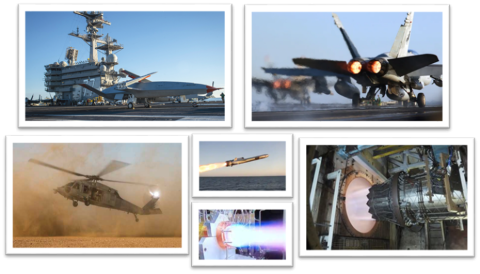The Jet Noise Reduction (JNR) Program is part of ONR’s Noise-Induced Hearing Loss Program and is a result of the health and environmental impacts of aircraft noise. Personnel supporting launching operations on the decks of aircraft carriers are subject to noise from the afterburning supersonic jet engines that can exceed 140 dBA. The purpose of this program is to better understand the physics of jet noise, with the ultimate aim of lessening the near-field noise by reducing, moving or shielding the sources from the people receiving this acoustic power. Community noise issues around naval bases also remains an important driver for continuing the search for system-neutral technologies to reduce jet noise.

The JNR program aims to understand the physics of jet noise produced by high-performance military aircraft, identify material/non-material solutions to reduce noise, and develop and transition the technologies to the fleet. The main parts of this program are developing a physics-based understanding of the fluid mechanics of the jet evolution, creating analytical and computational models and understanding of how these complex fluid flows create jet noise, and developing standard and reproducible high-quality supersonic jet-noise measurements. A research effort focusing on the development of tools for the passive and active control of hot supersonic jets, resulting in significant jet noise reduction, is the ultimate goal.
Research Concentration Areas
The JNR project supports the development of fundamental tools such as theoretical noise models, computational prediction tools, noise-control strategies, diagnostic tools and enhanced source localization that will enable the optimized design of noise-control systems for legacy, emerging and future tactical aircraft. The project examines noise-mitigation approaches at all levels of technology maturity, both computationally and experimentally, and encourages research into new areas of noise control through theoretical development and experimental validation.
Research Challenges and Opportunities
- Fluid mechanics of single and twin, supersonic, heat jets: instabilities, transition, turbulence and mixing
- Better understanding of how the various scales of turbulent structures develop and interact, leading to the generation and radiation of noise
- Statistical and deterministic methods in characterizing and understanding turbulence and jet noise
- Effective noise-source models for noise produced by large-scale jet structures in hot, supersonic jets
- Efficient and reliable, time-resolved, noise-prediction tools
- Single-and multiple-scale modeling and computations
- Techniques for diffracting, shielding and localizing noise away from undesired locations on the deck
- Design and inverse (adjoint) optimized solutions with significantly reduced jet noise
- Validation data for theoretical and computational models
- System-neutral, active- and passive-control strategies for significant exhaust-noise reduction
- Tools for predicting and technologies for mitigating fluid-structure interactions due to highly integrated exhausts and airframe
How to Submit
For detailed application and submission information for this research topic, please refer to our broad agency announcement (BAA) No. N0001425SB001.
Contracts: All white papers and full proposals for contracts must be submitted through the ONR Submission Portal; instructions are included in the BAA.
Grants: All white papers for grants must be submitted through the ONR Submission Portal, and full proposals for grants must be submitted through grants.gov; instructions are included in the BAA.

